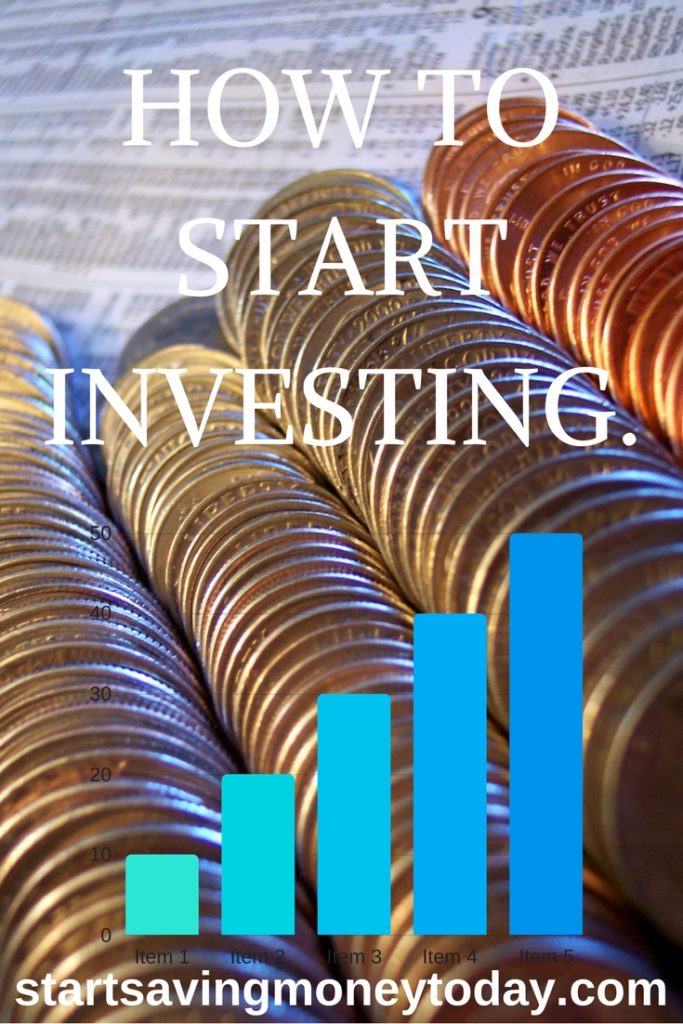How to start investing
In the US it’s available to get wealth. That said, many people are poor. News abounds with stories about those who “have lost it all,” “can’t find work,” or “never had a chance.” In almost every municipality there are homeless shelters and food pantries. There is a need for the programs that exist in public sectors at all levels—federal, state, community—and private sources, as well, to aid people experiencing hard times. Unfortunately, many people who are now “gainfully employed” could find themselves facing similar circumstances in the future. In order to protect our future we need to start investing, and we need to know how to start investing. Not every plan will work for everyone.
We need to make our money work for us. People need to start investing in their own futures. Because they don’t know ?how to start investing?, many tend to be hesitant to take that step. Need for financial education, bad spending habits, and a (seeming) lack of urgency are contributing factors. Let me show you:
Need for financial education
How much money do you need to have in order to start investing? What would you say, if I told you, you don’t need any? In a very real sense, that’s true: One (recurring) investment you could make is to contribute to your 401(k) at work. That requires no out of pocket money, and in most cases, there is no required minimum contribution. You can make contributes a small as 1 % from of each pay check.
If you don’t have a 401k, open a retirement account with a brokerage firm; they’re everywhere. Usually, the required minimum monthly deposit is not much. As I always advise: Do your homework, find a reputable company: Ask questions until you understand how your account functions: Know what you are getting into.
Contributions to your retirement account are investments.
Bad spending habits
Included in bad spending habits are misappropriating funds and spending money needlessly. The first things we all think about when it comes to bad spending habits are smoking, drugs, and drinking (alcohol), but there are a lot of others. I know several people that drink three or four soft drinks on a daily basis. Soft drinks aren’t cheap, and they’re, really, not good for your health. That can lead to the need to spend money reestablishing a fit constitution. (That falls into the category of spending money we should not have needed to spend.) Most communities still provide decent tap water. That’s a cheaper, healthier beverage.
What about entertainment? Say, movies… Do you have to see the newest releases? And while you’re at the theater, do you purchase a drink and popcorn, or any other snack? You can drop a lot of money just to see one movie, and new ones come out every week. You’d save a little money cutting out the snacks. But think about this, you could watch Netflix at home and enjoy a snack, too. Let’s face it: most of us include some kind of snacks in our food budget. But back to Netflix, did you know that the monthly charge for Netflix is comparable to (or maybe, less than) the price many theaters charge for one movie ticket? On that note, do you go to the movies by yourself? Most people don’t—$$.
There are many other categories of bad spending habits: eating out too often, “needing” the newest and best cars, buying designer anything, sending your kid(s) to college at your alma mater, because that’s where you went, when the state college would provide an education that’s just as good. Spending money to excess on anything is a bad financial practice. Of course, it’s all about choices: Often there is a good, less expensive alternative.
I don’t want to spend too much time giving you a laundry list of bad spending habits. I’d rather share one good habit: Pay yourself first.
Every time you get paid, or come across extra-money, set aside a predetermined percentage of it to pay yourself. That money should be invested into your future. Put it to work earning more money.
To minimize
To minimize, to ignore, to be casual, or to have a blithe disregard for the future is a bad habit. And by the way, it will—eventually—lead to another bad habit: Worry. (If you do a quick search on “worry,” it won’t take you long to see how bad it is for you.)
Lack of urgency
Before I go any further, I want you to know that I have a deep appreciation for life and living. I think we should expect to be blessed and make the most of “now,” but (even if it’s nothing more than getting older) circumstances change. We need to plan for the future, because it is going to get here.
Because “The Future” is rather nebulous and a bit hard to define (or confine), a lot of people are content to put off preparing for it until “sometime in the future.” It’s almost an “it won’t happen to me” attitude, so they don’t prioritize investing in it. If you take that attitude, it will sneak up on you, and when you (finally) realize it’s here—that’s when worry can overwhelm the joy of living. However, if investing in your future is part of living “now,” worry doesn’t have to be an issue.
By the way, you can do your children a favor: Teach them the importance of investing in the future and school them in a good investment strategy. (That means you have to have one.)
How to start investing
Here’s something to think about: Investing in the future is important. So is saving. Do you know the difference between them?
Savings
Savings is putting away cash so you have it when you need it. Examples of savings would be your emergency account or the money you have set aside for making car repairs. You can use a savings account or some money market accounts. When you use savings or money market accounts, you can quickly retrieve your money—usually, in less than two days. It’s a good idea to make sure the institutions you use are insured by FDIC.
Investments
Investments are assets purchased with a reasonable expectation that they will increase in value over time. Examples of investments are stock, corporate and government bonds, and real estate. Investments are to be considered long term transactions. Time is a condition of the investment. You should not expect to be able to cash out with a profit after only a few days of making an investment.
I’m doing what?
If you are putting money aside for your emergency account, you are saving money. These are funds you want to be able to retrieve quickly.
If you’re buying a house and decide to sell it, you won’t be able to get the money out of your home quickly. It could take several months. Houses—real estate—should be considered investments. With investments you generally hold on to them, expecting their value to gradually increase. Some people even buy property with a plan to sell it when they retire or at some other milestone in life—say to pay for a child’s college education.
Earlier in this post, I suggested starting a retirement account. This would be an investment. You will not able to retrieve the money quickly. The company you invest with will use the money you invest to purchase stocks, bonds, maybe real-estate. Assets of some kind will be purchased, but when you start payouts, it’s most likely you will receive monetary funds.
How to start investing The Plan
There is no reason to start a retirement account, or any other investment program, if you are going to have to rob it to buy tires for the car, a hot water heater for the house, or pay doctor bills. That is what your emergency account is for.
I recommend having an emergency account equal to six months worth of living expenses before you before you start investing. If you already have a retirement account I would recommend you stop making contributions to it and use the money you’ve been “investing” to build up your emergency account. After you have an emergency account, start contributing to a retirement account.
I’ve noted the difference between investing and saving, but there’s a twist. Some savings are investments. In a very real sense, your emergency account is an investment. While your retirement account is an investment in your future lifestyle, your emergency account is an investment in your current lifestyle. Among the things it protects are the funds you use for investments. Build an emergency account. The day will come when you’ll need the money. As soon as you have those funds in place start investing in a retirement account. The future will arrive. You’ll need the money.
More investment planning
How much do you need in order to retire? To a great extent, that’s a personal question. The answer will be different for everyone.
Where do you want to be when you retire? What kind of lifestyle do you want? How much money do you want to have?
As an example: Many people feel they need a million dollars in their retirement accounts. How much do they need to contribute yearly to the account in order to achieve that goal? Remember, a retirement account is about investment. Your deposits should be making money, so you won’t be saving a million dollars. (But, as much as I hate to say it, investments are not without risk. You need to closely monitor the progress towards your goal.) You’ll want to work closely with your account representative to respond variables and to determine how much your monthly or annual contributions need to be.
Also, consider why you need a million dollars (or any figure you’ve predetermined)? Is it so you can buy a home when you retire? Because if it is, you could buy a home now and have it paid off before you retire. Two reasons for considering this move would be (1) you need a place to live now, and (2) the cost of housing is likely to increase over the years.
In reference to that last point: Average retirees spend over a third of their retirement income on housing. If you could have your home paid off prior to retirement you would have a more money to spend on other things. You know, the purchase of a house is an investment. When you retire, actually whenever you get it paid off, your cost of living drops dramatically, possibly as much as thirty percent—or more. (By the way, there are numerous sites in the internet that can help you determine by locale how far a million dollars can go.) Would you still need a million dollars?
Going into retirement you could decrease your cost of living so much on the average of over thirty percent. That’s a very significant number. (a you need a place to live now) and have it paid off before you retire. Do you still need a million dollars?
Conclusion
It’s important to understand the difference between saving money and investing money. Saving money is putting money in a safe, but accessible place for use as needed in circumstances outside the norm of your lifestyle. Investments are purchased (or saved) assets you believe will increase in value. Often they are a sort of insurance against a drastic change of lifestyle when you retire. If you don’t want to mine your investments to cover unexpected circumstances in the present, you need to have savings in an emergency account.
How to start investing
Essentially, an emergency account is an investment in your present. As soon as you have those funds together, you need to think about your future (your retirement). Start a retirement account and seriously consider making a home part of that investment. Retirement is a state most of us will reach at some point. We need to be financially prepared for it.
Never miss another post follow me on Facebook



